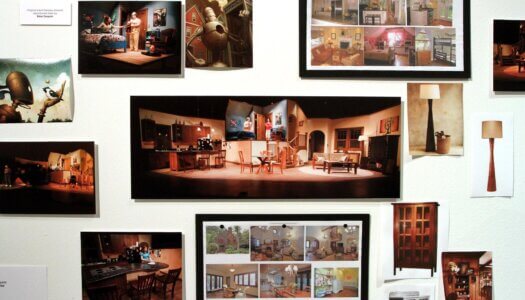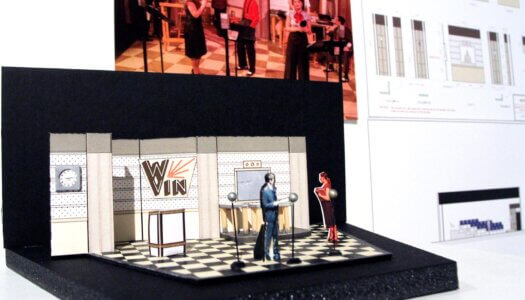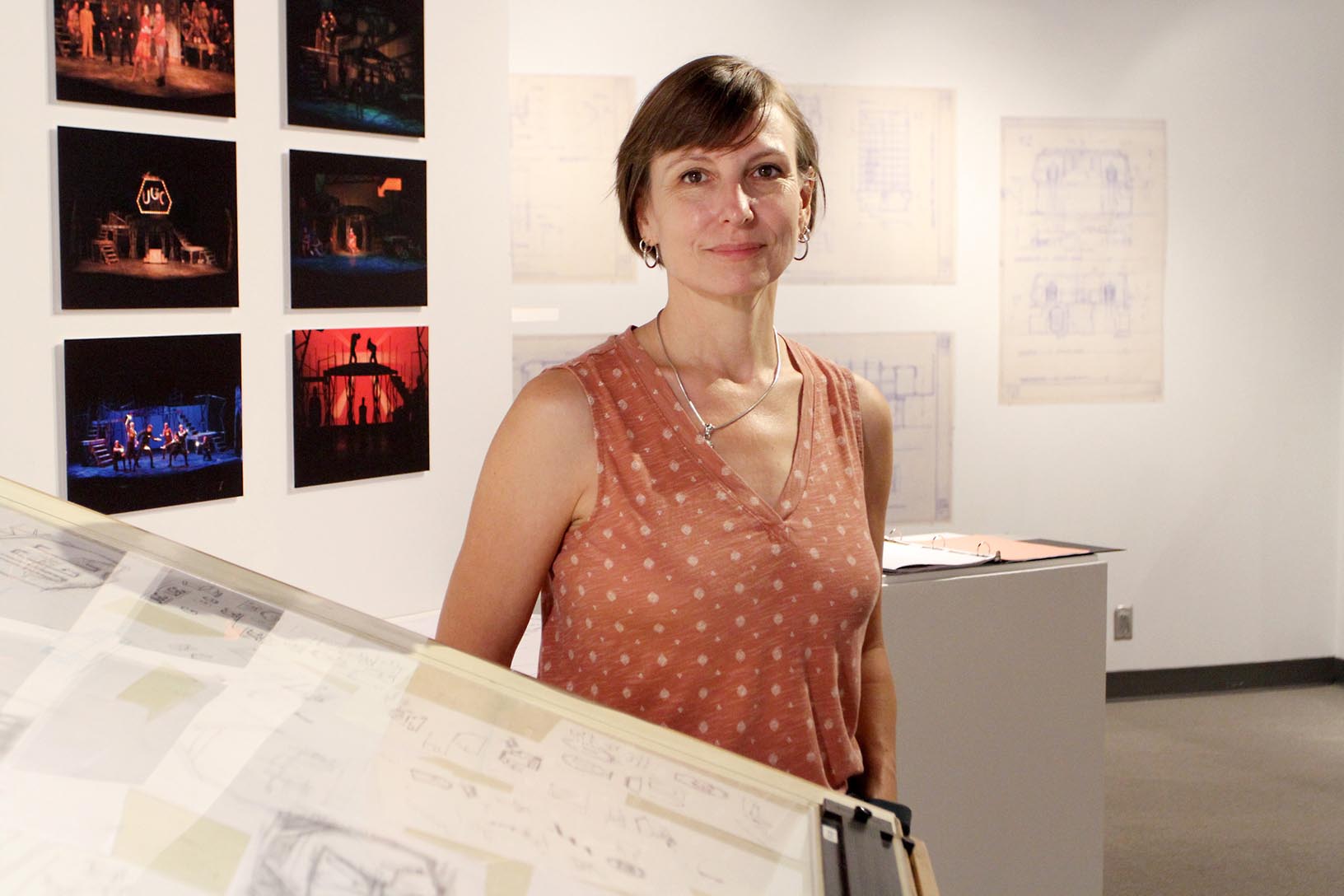
By TYLER ELLYSON
UNK Communications
KEARNEY – Ahna Packard has a resume that would make any Trekkie jealous.
The University of Nebraska at Kearney faculty member helped create some memorable pieces for the iconic television and film series, including the Argo shuttlecraft from the “Star Trek: Nemesis” movie and the engine room, warp core and transporter system for the NX-01 starship featured on “Star Trek: Enterprise.”
Packard spent 20 years working as a professional set designer in Hollywood and other locations across the country before joining UNK’s interior and product design program in 2018. Now she’s using that background to teach her students about the industry and open their minds to a variety of career opportunities.
“It’s nice to let them know there are options other than a residential or commercial design firm,” Packard said. “There are theme parks, theater, movies and television that all utilize the skills we’re teaching. I want to open the job market for them.”
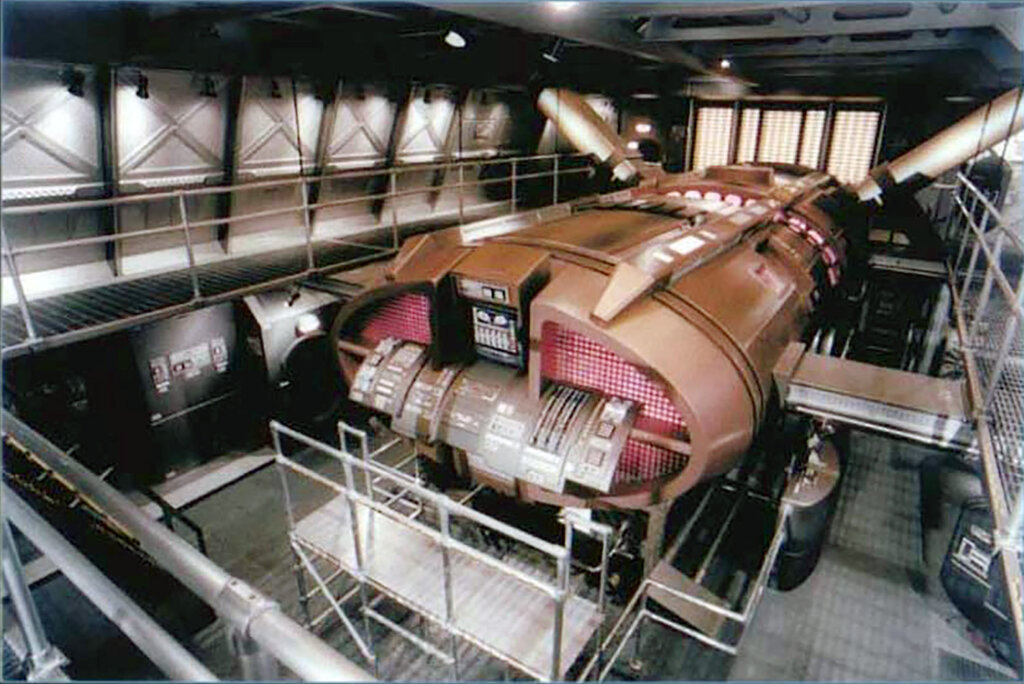
The Vermillion, South Dakota, native has experience in all of these areas.
Packard earned a bachelor’s degree in theater design from the University of South Dakota, where she met her husband Darin Himmerich, a UNK faculty member since fall 2007 and the current theater program director. With her sights set on the television and film industry, the couple moved to Los Angeles in May 1997, just days after Packard completed her master’s degree in theater scenic design at the University of Nebraska-Lincoln.
Packard’s first gig came rather quickly when she was hired to assist with props on a shoot for Elvira, the horror movie hostess best known for her black wig, bold makeup and revealing gown. Then she landed a job on the Paramount Pictures lot designing a traveling “Star Trek World Tour” exhibit for Paramount Parks. The exhibit debuted in Düsseldorf, Germany, in December 1998 before moving to Austria and Singapore.
With enough hours to join the International Alliance of Theatrical Stage Employees (IATSE), a labor union representing technicians, artisans and craftspeople in the entertainment industry, Packard was now able to work on network television and large, feature films.
Over the next seven years her production credits included “Stark Raving Mad,” an NBC show starring Tony Shalhoub and Neil Patrick Harris, “The Trouble with Normal,” which aired on ABC, and, of course, the “Star Trek: Nemesis” feature film and all four seasons of the “Star Trek: Enterprise” series on UPN. She also worked on several projects at the Universal Studios theme park.
As a set designer, Packard created construction drawings and models for different television and movie sets while working under a production designer and art director. The level of creative freedom she was afforded varied with each team.
“On ‘Star Trek’ we were very fortunate,” she said. “We were just told to design something and they tweaked what we designed. Production designer Herman Zimmerman was very trusting of his art department. He was a joy to work for.”
With their children approaching school age, Packard and Himmerich decided to leave the glitz and glamour of Los Angeles in 2005 to raise their family back in the Midwest. Packard worked as an adjunct faculty member at USD and UNL for nine years while commuting to design jobs during her time off.
“That got really old,” she said. “I was sleeping on people’s couches and living in hotels.”
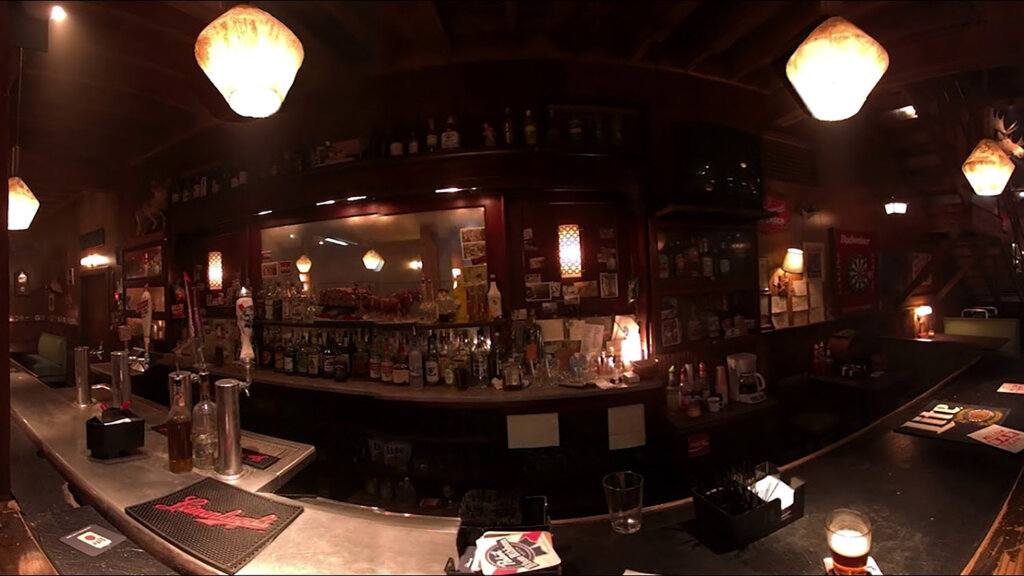
But the work bolstered an already impressive resume.
From 2005 to 2017, Packard’s designs were featured on the TV shows “Monk,” “The Ex List,” “Detroit 1-8-7,” “Justified” and “Sleepy Hollow,” as well as films such as “The Experiment” starring Adrien Brody and Forest Whitaker, “Nebraska” and “Teleios.” Most recently, she worked under production designer Steve Arnold on the Hulu show “Castle Rock” while designing the Mellow Tiger Bar set.
In addition to her TV and film credits, Packard has done scenic design for the Omaha Community Playhouse, Nebraska Repertory Theatre and Angels Theatre Company in Lincoln and Black Hills Playhouse in South Dakota, along with shows at USD, UNL and UNK.
Packard enjoys all of these areas, but admits they’re quite different.
“In theater, it’s all on you. There’s usually just one scenic designer and maybe an assistant,” she said. “Yes, you have more control, but your budgets are also much lower. What we have for budgets for a full show isn’t even the cost of the budget for one episode on a TV show.”
TV design is a “constant production,” she said, with new sets needed each week.
“In film, you get to contemplate the design more. You get to tweak it more. You get to think about it more.”
There’s one more major difference worth noting.
“Film and television are much nicer to your pocketbook than theater is,” Packard said with a laugh.
Packard hasn’t worked on TV or movie projects since she joined UNK as an assistant professor in 2018, but she still does some theatrical design when her schedule allows.
The UNK faculty position is a good fit for Packard, whose past experiences with TV and film add value to the interior and product design program.
“They’re parallel careers,” she said. “The tools that you need for both are the same; it’s just how you implement those tools.”

WALKER ART GALLERY EXHIBIT
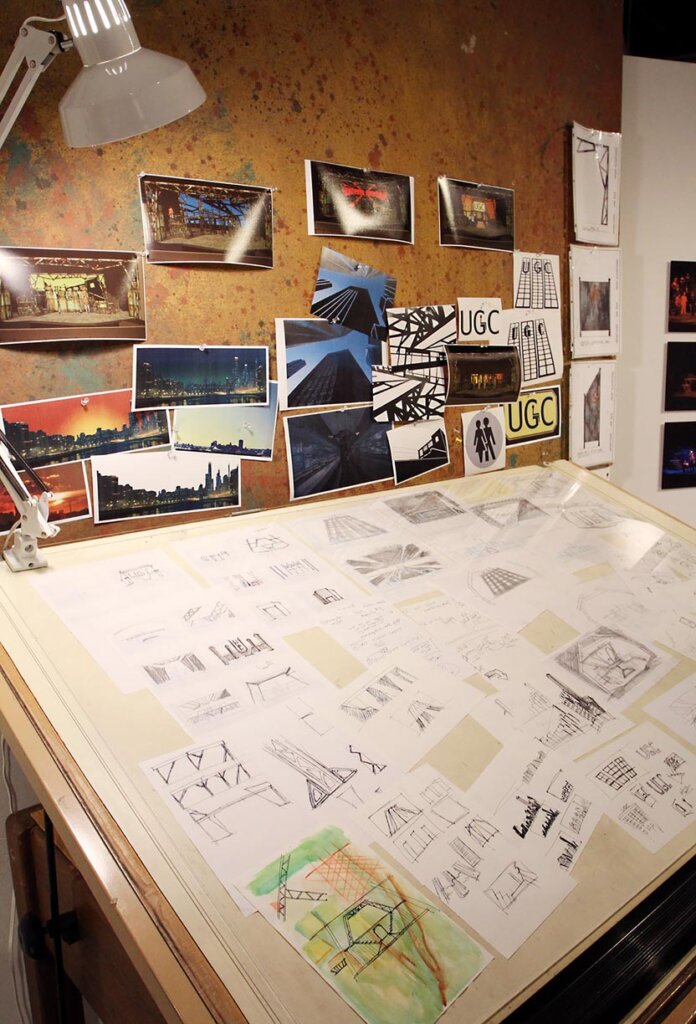
“Draw, Discard, Draw: The Art of Process in Stage and Entertainment Design” showcases design work from both Packard and Himmerich.
The Walker Art Gallery exhibit highlights the design process through renderings, sketches, models and draftings from a variety of shows, including UNK and Omaha Community Playhouse productions and “Star Trek” television and film work.
“There’s nothing matted. There’s nothing formally presented. We’re trying to show the process – what you don’t get to see on stage or TV – and the work that goes into it,” Packard said.
“Draw, Discard, Draw” runs through Sept. 24 in the Walker Art Gallery in UNK’s Fine Arts Building. Viewing hours are 8:30 a.m. to 4:30 p.m. Mondays through Fridays. Face masks must be worn inside the Fine Arts Building.
An associate professor in the Department of Music, Theatre and Dance, Himmerich built theatrical scenery in Los Angeles for seven years before joining UNK in fall 2007. He’s served as the technical director for 39 productions and designed scenery for 23 productions at UNK. In addition to his creative work at the university, Himmerich has designed scenery for the Nebraska Repertory Theatre, Black Hills Playhouse, Crane River Theater, Cortland Repertory Theatre, Omaha Community Playhouse and Lincoln Community Playhouse.
“We have very different ways of working, so it’s nice to show two different methods in the exhibit,” Packard said. “I’m very much a pencil-in-hand sketching person and he’s more of a build-it-on-the-computer person. I’m a little more organic in my process and he’s a little more analytical.”
